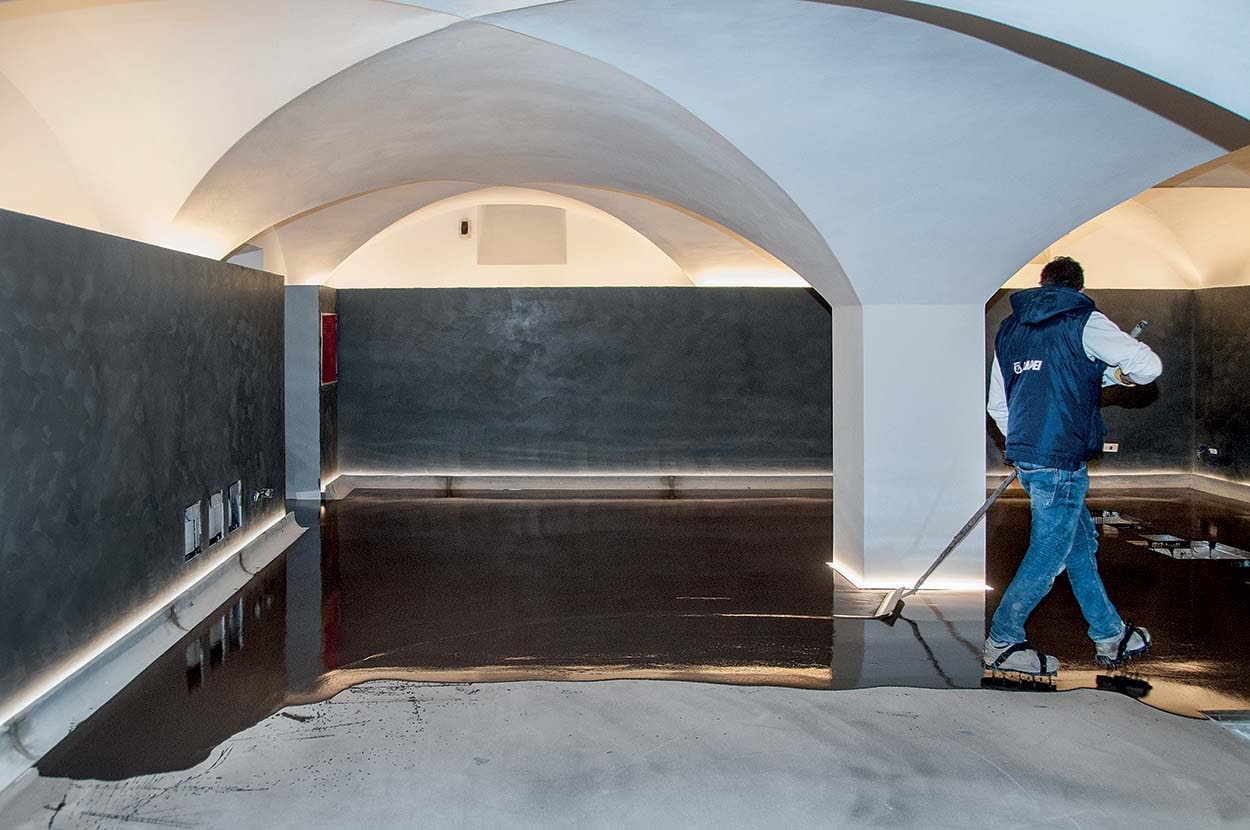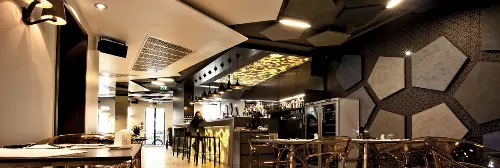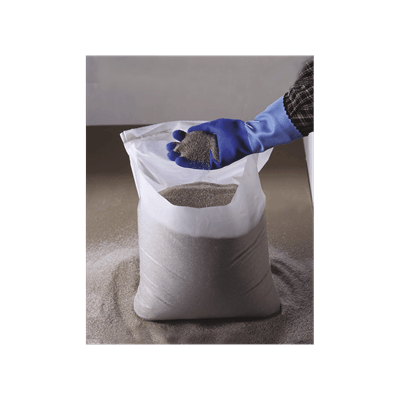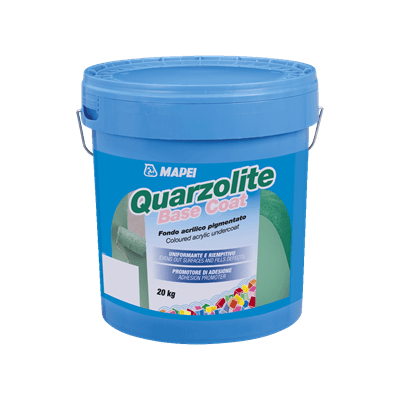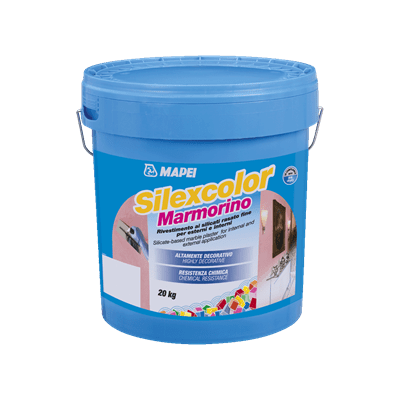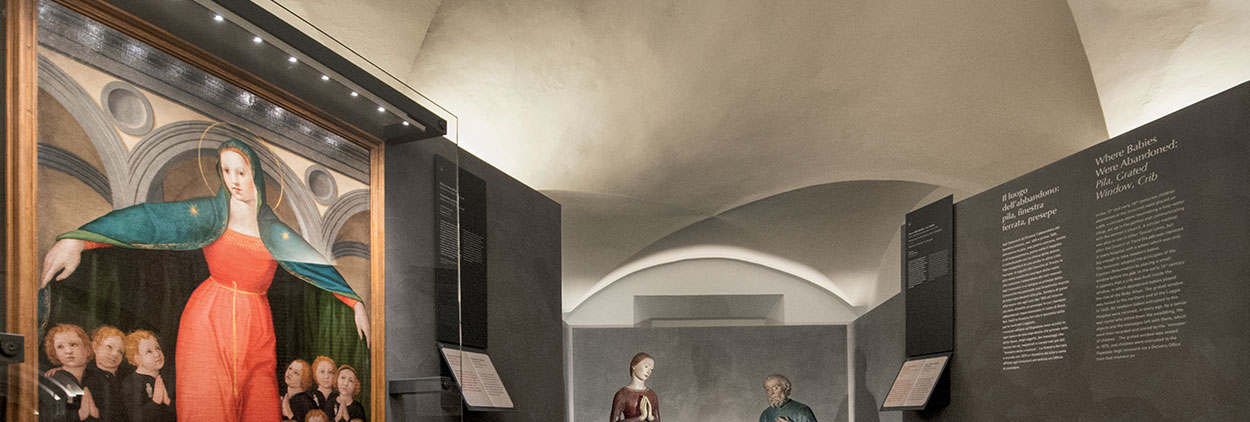
Museum of the Innocenti in Florence
The Institute of the Innocenti, the first non-denominational structure in Italy dedicated to the care of children, has turned some of its areas into a museum.
The renovation and redevelopment work on the rooms in the Museum proved to be a technically complex undertaking, as well as delicate, on a Renaissance period building within a time frame that had to be maintained in order to be ready for the inauguration planned for December 2016.
A BRIEF HISTORY OF THE INSTITUTE
In 1419, a donation from the will of the Florentine merchant, Francesco Datini, was used for the construction of an institute for abandoned children in the city of Florence. The structure, the first of its kind in the world, was named in honour of Saint Maria of the Innocents and the City Council awarded it the same privileges as all the other hospitals of the city. The Guild of Silk – one of the seven Florentine art and crafts corporations – was given the job of building the structure and they chose an area of land in what is now the central Piazza dell’Annunziata, a long way from the civil and political heart of the city, but at the centre of what was planned to be the city’s medical hub, close to the Convent of San Marco, the Basilica of the Annunziata and Palazzo Medici. The Guild of Silk appointed Filippo Brunelleschi to design the structure and work continued until well into the XVI century, although the first orphans were already provided with shelter in 1445. It was soon considered to be a model institute for the rest of the world and the Hospital, now known as the Institute of the Innocenti, continued with its mission over the centuries, coming into line with the new norms and standards regarding the protection of children and families, and even playing an active role in writing the standards. In 1890 it became what was then known as an I.P.A.B. (Institute for Public Assistance and Charity), while today the Institute is an ASP (Public Service Centre for the People) and continues its work helping children. Inside the structure there is a crèche, an infant school, three family homes for children in the care of mothers going through difficult times and a number of UNICEF research offices. The Institute is also a central national archive and analysis centre for children and adolescents and has become a national and European reference point for the promotion of children’s rights.
A RENAISSANCE PERIOD PUBLIC BUILDING
Right from its foundation, the owners and numerous benefactors of the Institute wanted the new structure to be made more welcoming with works of art: the management committee of the Hospital, therefore, decided to contact the most well-known figures from the Florentine Renaissance movement. And so, artists such as Domenico Ghirlandaio and Piero di Cosimo, and sculptors such as Luca and Andrea della Robbia, were chosen to decorate the most important areas of the complex. Many of these works of art are still conserved in the display rooms of the new MUDI (Museum of the Innocenti).
THE NEW MUSEUM OF THE INNOCENTI
Inaugurated on the 24th of June 2016, the MUDI now offers the public more extensive and freshly-renovated exhibition areas and new services and activities for visitors. The new Museum has an exhibition area of 1.456 m2 divided over three floors, with a further 1.655 m2 that are used for temporary events and educational activities, which again focus on the theme of childhood and shelter for children. Apart from the exhibition areas, the MUDI also has art studios for children and families, temporary exhibitions, a meeting point for residents and tourists wishing to visit Florence, conventions, teaching activities, a bookshop specialised in children’s books and a coffee-shop in the XV century portico which is open to both visitors to the museum and the general public. At basement level the exhibits tell the story of the evolution of the Institute of the Innocenti, while on the ground floor there is an illustrated guide of the architectural history of the Hospital, showing the renovation work carried out over the years to meet the changing needs of the shelter. On the second floor, above the façade portico, there is a Gallery that hosts the “Coretto di preghiera delle balie” (Nannies Prayer Circle) and the most precious works of art, around eighty exhibits including pieces by Sandro Botticelli, Domenico Ghirlandaio, Bartolomeo di Giovanni, Piero di Cosimo and Luca and Andrea della Robbia. And it was the latter artist who also created the symbol for the building, “Ten Multi-coloured Precious Cherubs”, which were taken down from the façade in 2015, completely restored, put on display in the Museum for 6 months and then, last December, finally put back in their rightful place.
WORK COMPLETED TO PERFECTION
At the Hospital of the Innocenti, new-born babies used to be abandoned on the “ruota degli esposti” (a kind of rotating hatch). Their parents would often leave a small sign of recognition attached to the babies in the hope that, one day, they would be in a position to take the child back if and when the situation in the family had improved, such as name tags, ribbons and blankets. These objects are now conserved in small display cabinets, along with the names of the babies the objects belonged to, in what is known as “The Room of Memories”. The entire exhibition area evokes very powerful emotions in the visitors, and this sensation is increased even more by the vaulted ceilings and lighting system. The renovation and redevelopment work on the rooms in the Museum proved to be a technically complex undertaking, as well as delicate, on a Renaissance period building within a time frame that had to be maintained in order to be ready for the inauguration planned for December 2016. The design studio that won the international tender, and the contractor appointed to actually carry out the work on the surfaces in the new Museum, were assisted by Mapei Technical Services. To make the new seamless flooring (for a total surface area of 1,700 m2), and make it highly resistant to abrasion and foot traffic, the choice went to ULTRATOP rapid-hardening, self-levelling mortar with a natural finish. The first step was to treat the laying surface with PRIMER SN two-component, solvent-free epoxy resin. Immediately after applying the primer, the surface was broadcast with QUARTZ 1.2 to help the ULTRATOP adhere perfectly. The next step was to apply a layer of anthracite ULTRATOP mortar.
ULTRATOP may be left with its natural finish or, as in this case, it may be ground so that the client can later choose the final pattern or finish. Once this phase had been completed, and the ULTRATOP had been ground with diamond disks and the expansion joints that had been formed in the mortar had been sealed with MAPESIL AC, the surface was treated with MAPECRETE STAIN PROTECTION, a stain-resistant, oil and water-repellent product made from organic polymers in water solution for surfaces in concrete, natural stone, stone material and cementitious material in general. The same shade of anthracite was also chosen by the designers for the plasterboard panels in the display galleries in the Museum (1.330 m2). In this case, they were primed with QUARZOLITE BASE COAT, an acrylic resin-based undercoat in water dispersion to even out surfaces, followed by a coat of QUARZOLITE PAINT. Work continued with the application of SILEXCOLOR MARMORINO silicate-based mineral coating paste. This product is used when, apart from good breathability, an antique finish typical of Venetian plaster is required. The SILEXCOLOR MARMORINO was mixed in tone-on-tone colours by a Colormap retailer to obtain the same shade as the ULTRATOP.





